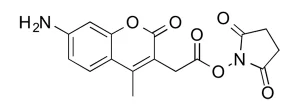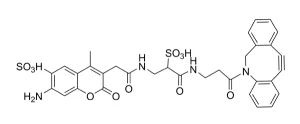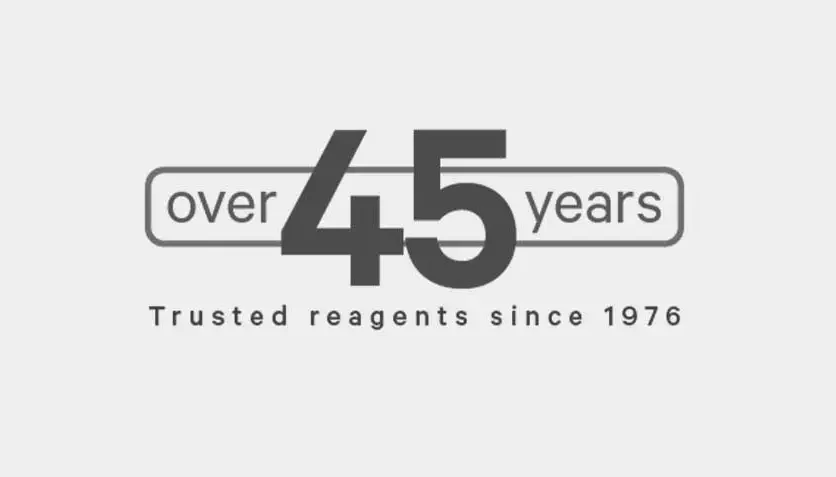
AMCA Acid (7-amino-4-methylcoumarin-3-acetic acid) is one of the most popular blue fluorescent tagging molecules. Often used as contrasting probes for double- and triple-labeling inimmunofluorescence microscopy, arrays and in situ hybridization. The desirable properties of AMCA dyes include a relatively large Stoke’s shift and resistance to photobleaching.
AMCA Acid is a reagent of choice for the preparation of custom activated esters that often are not commercially available. Examples of such activated esters include sulfo-NHS, TFP (2,3,5,6-Tetrafluorophenol), STP (4-Sulfo-2,3,5,6-Tetrafluorophenol, Sodium Salt). Another common application for non-activated carboxylic acid is peptide modification during solid phase synthesis, which usually requires in-situ activation with peptide coupling regents, for example HATU. AMCA Acid is also often used for control experiments, and for calibration.
| Unit Size | 25 mg, 100 mg, 1000 mg |
|---|---|
| Reactivity | Primary amines (needs activation) |
| Abs/Em Maxima | 345/450 nm |
| Extinction coefficient | 19,000 cm-1M-1 |
| Solubility | DMSO, DMF |
| Spectrally similar dyes | Alexa Fluor® 350, AMCA, DyLight® 350 |
| Molecular weight | 233.27 |
| Storage Conditions | -20°C. |
| Shipping Conditions | Ambient temperature |

Applicable patents and legal notices are available at legal notices.




Stay in the Loop. Join Our Online Community
Products
Ordering
About Us
Application
Resources

©Vector Laboratories, Inc. 2025 All Rights Reserved.
To provide the best experiences, we use technologies like cookies to store and/or access device information. Consenting to these technologies will allow us to process data such as browsing behavior or unique IDs on this site. Not consenting or withdrawing consent, may adversely affect certain features and functions. Privacy Statement
How do I Request a Quote?
To request a quote for products: